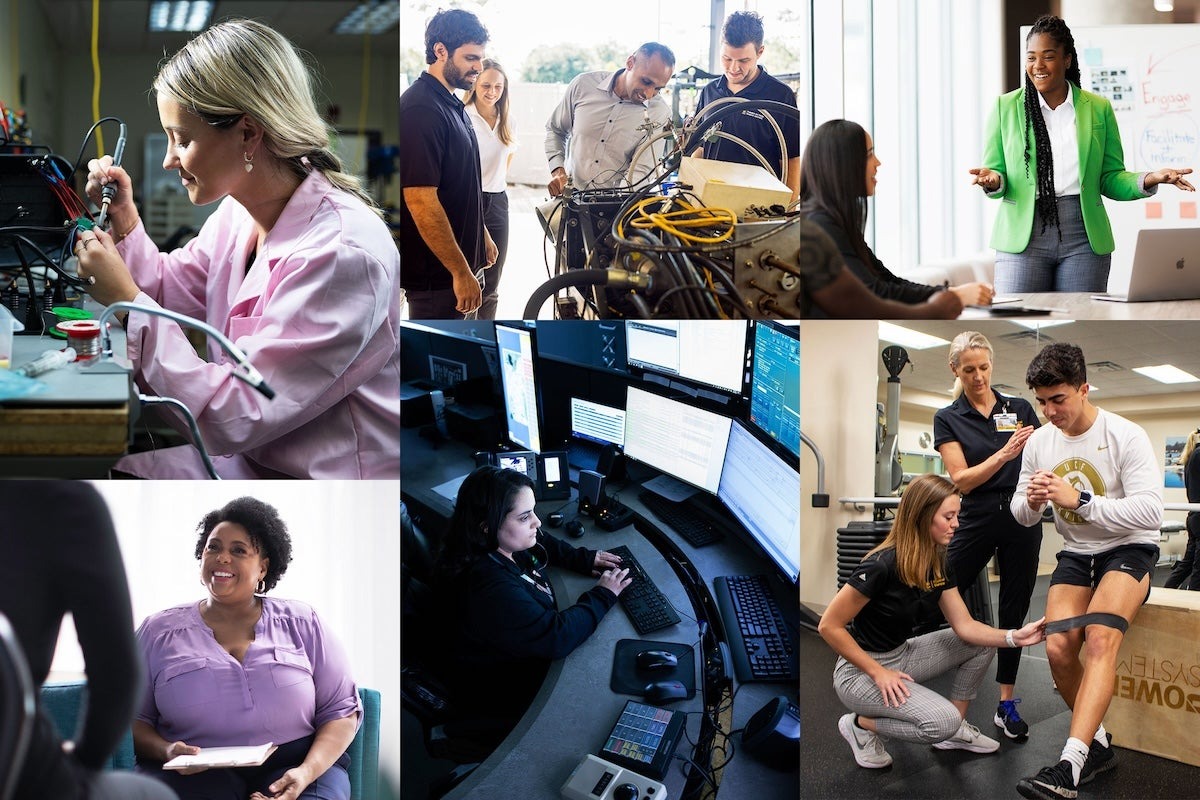Coastal Changes Worsen Nuisance Flooding on Many U.S. Shorelines, Study Finds
Nuisance flooding has increased on U.S. coasts in recent decades due to sea-level rise, and new research co-authored by the University of Central Florida uncovered an additional reason for its added frequency.
In a study appearing today in the journal Science Advances, researchers show that higher local tide ranges, most likely from human alterations to coastal areas and estuaries, have increased the number of nuisance flooding days in many coastal locations in the U.S.
Coastal nuisance flooding is considered to be minor flooding from the seas that causes problems such as flooded roads and overloaded stormwater systems, which can be major inconveniences for people and provide habitat for bacteria and mosquitoes.
Changes to the local tide range often occur in coastal areas and estuaries when channels are dredged, the land is reclaimed, development occurs, or river flows change. This can cause tide ranges, defined as the height difference between high tide and low tide, to increase in some areas and decrease in others.
The study found that out of the 40 U.S. National Oceanic and Atmospheric Administration tidal gauge locations used in the study that dot the continental U.S. coastlines, nearly half had more nuisance flooding days because of higher local tide ranges.

“It’s the first time that the effects of tidal changes on nuisance flooding were quantified, and the approach is very robust as it is based purely on observational data and covers the entire coastline of the U.S. mainland,” says study co-author Thomas Wahl, an assistant professor in UCF’s Department of Civil, Environmental and Construction Engineering.
The researchers performed the study by using tidal gauge data at 40 locations along the Atlantic, Gulf, and Pacific coasts spanning at least 70 years of data. They compared water levels at the locations based on two different scenarios – one in which the tidal range never changed and one where it did.
This allowed them to see how often nuisance floods occurred or were prevented over time because of tidal changes.
They found that nuisance flooding increased because of tidal changes in about half the locations, decreased in a fourth of the locations, and was not changed in the remaining quarter of locations.
For example, in 2019, Cedar Key, Florida, received about 23 additional nuisance flooding days because of increased tidal range, while Washington, D.C., had about 42 fewer due to decreased tidal range.
“Seeing how many nuisance flooding events occurred in the past and are happening today simply because of tidal changes should be motivation for us to keep alterations to sensitive estuarine systems at a minimum as to not further exacerbate the problem, which we already face because of sea-level rise,” Wahl says. “We should at least be aware of these potentially negative impacts in the planning phase of alteration projects, and it might even be possible to reverse some of the negative impacts from past decisions.”
Sida Li is the study’s lead author and a visiting student in UCF’s Department of Civil, Environmental and Construction Engineering and the National Center for Integrated Coastal Research.
Li says that while a few individual instances of minor flooding events do not cause too many impacts, the cumulative impacts of frequent events can become very large.
“Hence, understanding what drives the changes in nuisance flooding is very important,” Li says.
The work was funded by the National Science Foundation.
Wahl earned his doctorate in civil engineering from the University of Siegen, Germany, and joined UCF’s Department of Civil, Environmental and Construction Engineering, part of UCF’s College of Engineering and Computer Science, in 2017. He is also a member of UCF’s National Center for Integrated Coastal Research.
Share This Article

UCF Launches 1st Planetary and Space Sciences PhD Program in Florida
As SpaceU, UCF is pushing the boundaries of exploration by launching a groundbreaking new doctoral program in the planetary and space sciences. Now, aspiring researchers can apply to the inaugural cohort of...
Latest News

UCF Fulbright Awardees Bring Their Passions to a Global Scale
Each year, the Fulbright Program offers opportunities for American students to conduct research, teach English, or pursue graduate study abroad. One of the most prestigious international exchange programs in the...

Unleash Opportunities with a UCF Graduate Degree
A graduate degree has the power to unleash opportunities by expanding careers, opening doors to new fields, and increasing lifetime earnings. According to the U.S. Bureau of Labor Statistics (2024),...

UCF Rosen College Ranks No. 1 in the World for Hospitality Education for 2025
One of the most anticipated theme parks in the world is about to open its gates — and right next door, the No. 1 hospitality and hotel management school on...

From Engineering to Counseling, Graduate Programs Highly Ranked by U.S. News Propel UCF Alumni to Thrive in Career
While pursuing a doctoral degree in aerospace engineering at UCF , Tommy Genova ’20MS ’20PhD worked alongside Professor Kareem Ahmed, one of the world’s foremost researchers in hypersonics and combustion. He played a...